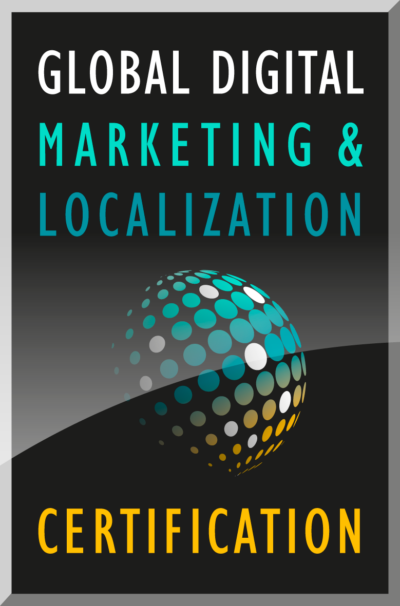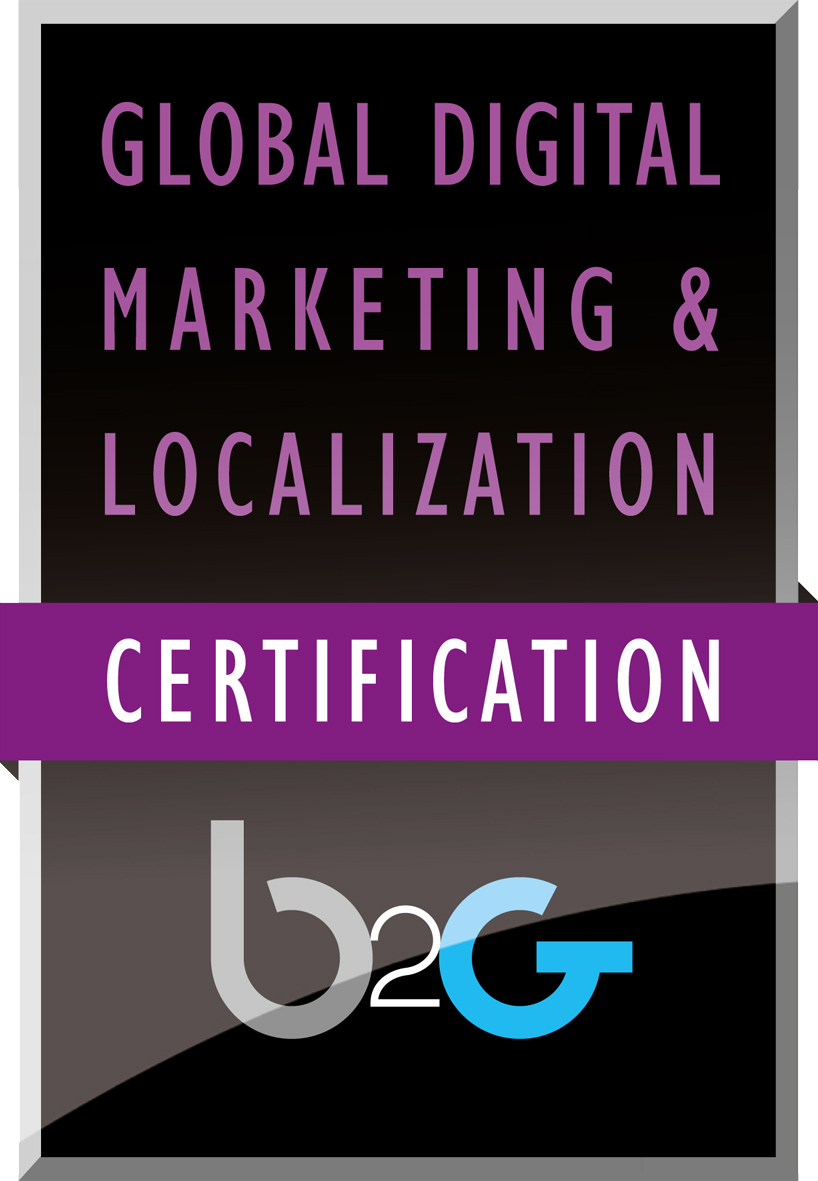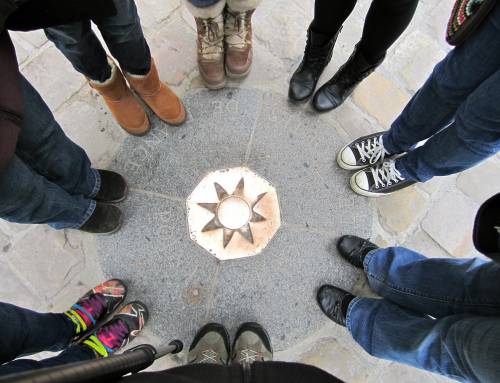This is a paper presented by Olesia Semenets, a recent graduate of the Global Digital Marketing and Localization Certification (GDMLC) program. This paper presents the work being produced by students of The Localization Institute’s Global Digital Marketing and Localization Certificate program. The contents of this Paper are presented to create discussion in the global marketing industry on this topic; the contents of this paper are not to be considered an adopted standard of any kind. This does not represent the official position of Brand2Global Conference, The Localization Institute, or the author’s organization.
The times when men conducted most of things in the world while women spent their lives staying at home with their activities limited to housekeeping and growing children are long gone. In modern Western society, women are almost equal to men in their social standing. You can see women participating in every field – in politics, in business, in sports, in science. They can vote, they can wear what they want, they can divorce and start over with a different partner or simply lead independent lives. Women have the right to birth control and can protect themselves from sexual assault and physical abuse.[1] Feminism is spreading and growing stronger every day, and in a feministic world, marketing your products ignoring women’s opinion is a perfect recipe for disaster.
You might ask, “What if I do not market to women? What if my target customer is male?” It looks like in that case you could ignore female viewpoints, but can you really? The answer is no, you cannot. Even though your production can be male targeted, there is always a possibility of female influence as your male clients have wives and girlfriends whose opinion matters to them. For instance, if men go to the gym or take care of the way they are dressed or purchase premium class cars, isn’t that to impress women in most cases?[2] Not mentioning, modern women do not limit their purchasing activity to buying strictly female oriented production – they as well buy cars, construction materials, all sorts of technical tools and professional equipment, etc.
According to a recent report by She-conomy, 85% of all consumer purchases are done by female customers. Women spend about $5 trillion annually, which is over a half of the U.S. GDP. Moreover, according to the same study, 91% of women said that advertisers do not understand them.[3]
One of the things that women find insulting and discriminating is that the media portrays them as sexual objects with stereotypically perfect bodies and flawless faces, avoiding using diverse images of more realistically looking women. A research by YouthSight (UK), done with the use of their new research tool called SYN (State of the Youth Nation), gives us the following figures: of the 1,000 surveyed young people aged 16- to 24- years old, 65% agreed that the way brands depict women is generally too sexualized, while only 14% disagreed with that. The research as well shows that over a half of the surveyed disagree with the statement that “brands have no responsibility to portray realistic body images and should be allowed to use whichever ad works best”. Only 24% agree with the statement and 23% have no opinion on that.[4]
A good example of a marketing close-mindedness can be worldwide known Barbie doll. This one not only has to do with unrealistic women’s beauty stereotypes, but as well serves as a striking example of how cultural ignorance influences global branding of a product. The doll has been manufactured in more than 45 nationalities and sold in 150 nations, yet the appearances of the dolls could hardly be called multinational: they looked very close to the original white Barbie doll except for their skin color and eye shape differed. The Mattel Company did not take into account that Western ideals of beauty would not necessarily suit each culture. As a result, some governments had to call a nationwide ban on Barbie dolls, like, for example, Malaysia did, “citing an alarming increase in anorexia and plastic surgery since the doll’s introduction to the Malaysian market” (Lind, 27).[5]
Meanwhile Dove’s Real Beauty campaign featured in its short films such as The Evolution of Beauty and commercials not young and skinny models, but older or standard-sized women,
showing that beauty is not to be found in perfection. The key to success here was the message of positive self-esteem transferred through the images to which women could relate.[6] The campaign won numerous awards and raised the company’s revenue from 2.5 billion $ to 5.8 billion $.
After major success in the West, Dove continued its advertising campaign in other countries and approached cultural and ethnic differences of its customers just as providently as it did with the diversity of women’s beauty. For instance, in India with its racially mixed population Dove’s campaign portrayed women from India with different hair styles, skin color, clothing and of different age.[7]
Taking cultural differences into consideration while creating a global marketing campaign is important in general, and marketing to women worldwide is no exception. Practice proves that Western model of feminism is not a cross-cultural thing. The third wave of feminism is driven by third world activists, who do not agree with the Western assumption that being a female is enough to unite women globally – there are also cultural and socio-economical differences between Western women and women from developing countries.
In particular, in Islamic countries, feminism is a rising thing, and in those countries feminists are very careful identifying their cause, as they might be seen as rejecting traditional religious and cultural values.[8]
Thus, companies marketing to Islamic women should adjust to this specific cultural environment. It is worth mentioning, that Muslim consumer market is represented by roughly 1.8 billion consumers, which is about one fourth of the world’s population. No wonder more and more global brands are trying to reach it, appropriately tailoring their approach. For instance, Uniqlo, in collaboration with designer and internet personality Hana Tajima, created its special modest wear collection to satisfy the cultural needs and modern taste of Muslim women.[9]
One more example comes from hair products advertising to Malaysian female consumers. To a Western mind, advertising hair products implicates showing hair, but the dilemma is that many Malaysian women cover their hair with a headdress (Hijab), because in Malaysia showing your hair in public is regarded inappropriate for a woman. Sunsilk, a Unilever shampoo brand, found a way to advertise its products while respecting that sensitivity. They created a special line of Sunsilk Hijab shampoos and conditioners, that were formulated for preventing hair loss and issues like sweaty hair and oily scalp, caused by wearing a head covering.[10] Models who represented the spirit of the brand were shown in their Hijab, without any hair showing at all. As a result of this campaign, Sunsilk grew its market share by 9% in 2013, after a decline in 5% in 2012.[11]
In our digital age, when spreading a word takes just a couple of computer mouse clicks, if you want your product to market successfully you should not only be far-sighted about how you advertise it, but as well mind every word of what you are saying in public. For instance, Chip Wilson, Co-Founder and Chairman of Lululemon, blamed his product failures on overweight women on national television. “Frankly, some women’s bodies just don’t actually work for it,” he said on Bloomberg TV. “They don’t work for some women’s bodies … it’s really about the rubbing through the thighs, how much pressure is there over a period of time, how much they use it.” It did not take long for women to unite in a digital protest to such rudeness. Outraged customers hijacked the company’s Facebook page and tweeted their disgust about Wilson’s comments, which left him no other choice, but to step down.[12]
As we can see, the importance of respecting the differences between male and female customers is not exaggerated, and here are a few tips on how to do it successfully:
- no matter how little your product or service has to offer to female customers, make sure the language of your website is not exclusionary male-addressed;
- remember that women make around 85% of all purchasing decisions today: they are buying for themselves, for their partners, for their children, for their elderly parents, for their friends and co-workers, etc.;
- do not determine buying potential by personal earnings as in many households women that make no income have full access to their husbands’ six-figure salaries;
- show that your company takes gender equality seriously by representing women in your team;
- speak to your female customers as to women first, as to customers second.
You simply need to take your time to understand WHOM you are talking to, not just WHAT you are saying. Today’s female consumers do not just purchase – they want to know WHO is behind the brand, WHAT you believe and HOW you are going to build a relationship with them.[13]
Author Bio:
 Olesia Semenets is a former tutor of the Russian language (teaching foreign students), a creative writer and a professional En<>Ru translator. She has two Lugansk National Taras Shevchenko University (UA) diplomas – one in pedagogics and another one in translation, as well as a certificate of a translation professional from Global Translation Institute (US). She is currently working as a freelance translator, and also translates for the Global Voices project. Olesia speaks four languages – Russian, Ukrainian, English and French. She is passionate about languages and believes that cultures of the world can interconnect as one friendly global society if we always remember to treat other cultures with respect and tactful understanding.
Olesia Semenets is a former tutor of the Russian language (teaching foreign students), a creative writer and a professional En<>Ru translator. She has two Lugansk National Taras Shevchenko University (UA) diplomas – one in pedagogics and another one in translation, as well as a certificate of a translation professional from Global Translation Institute (US). She is currently working as a freelance translator, and also translates for the Global Voices project. Olesia speaks four languages – Russian, Ukrainian, English and French. She is passionate about languages and believes that cultures of the world can interconnect as one friendly global society if we always remember to treat other cultures with respect and tactful understanding.
Connect with Olesia:
LinkedIn: https://www.linkedin.com/in/olesia-semenets-5482474a/
“I was surprised to discover how fascinating the field of global marketing can be. Sometimes I would lose track of time watching the lectures. I am seriously thinking of certain changes in my career now thank to the course. It inspired me, and I am so grateful to you for that”
References:
[1] – http://www.inquiriesjournal.com/articles/395/western-feminism-in-a-global-perspective
[2] – https://howtobuildabrand.org/online-marketing/feminism-in-online-marketing/
[3] – https://www.fastcompany.com/1825231/marketing-women-how-get-it-right
[4] – https://www.marketingweek.com/2015/09/11/why-marketing-should-take-a-stance-onfeminism/
[5] – http://www.inquiriesjournal.com/articles/395/western-feminism-in-a-global-perspective
[6] – https://www.fastcompany.com/1825231/marketing-women-how-get-it-right
[7] – https://gfluence.com/winning-female-beauty-consumers-india-lesson-dove/
[8] – http://www.inquiriesjournal.com/articles/395/western-feminism-in-a-global-perspective
[9] – http://www.marketing-interactive.com/marketing-muslims-stay/
[10] – http://www.marketing-interactive.com/young-muslim-women-and-their-love-for-japanesebrands/
[11] – https://www.econsultancy.com/blog/67707-digital-marketing-in-asia-spotlight-on-malaysia
[12] – https://mic.com/articles/80229/23-inspiring-feminist-digital-campaigns-that-changed-theworld#.aQYiGKu76
[13] – https://howtobuildabrand.org/online-marketing/feminism-in-online-marketing/
Disclaimer











